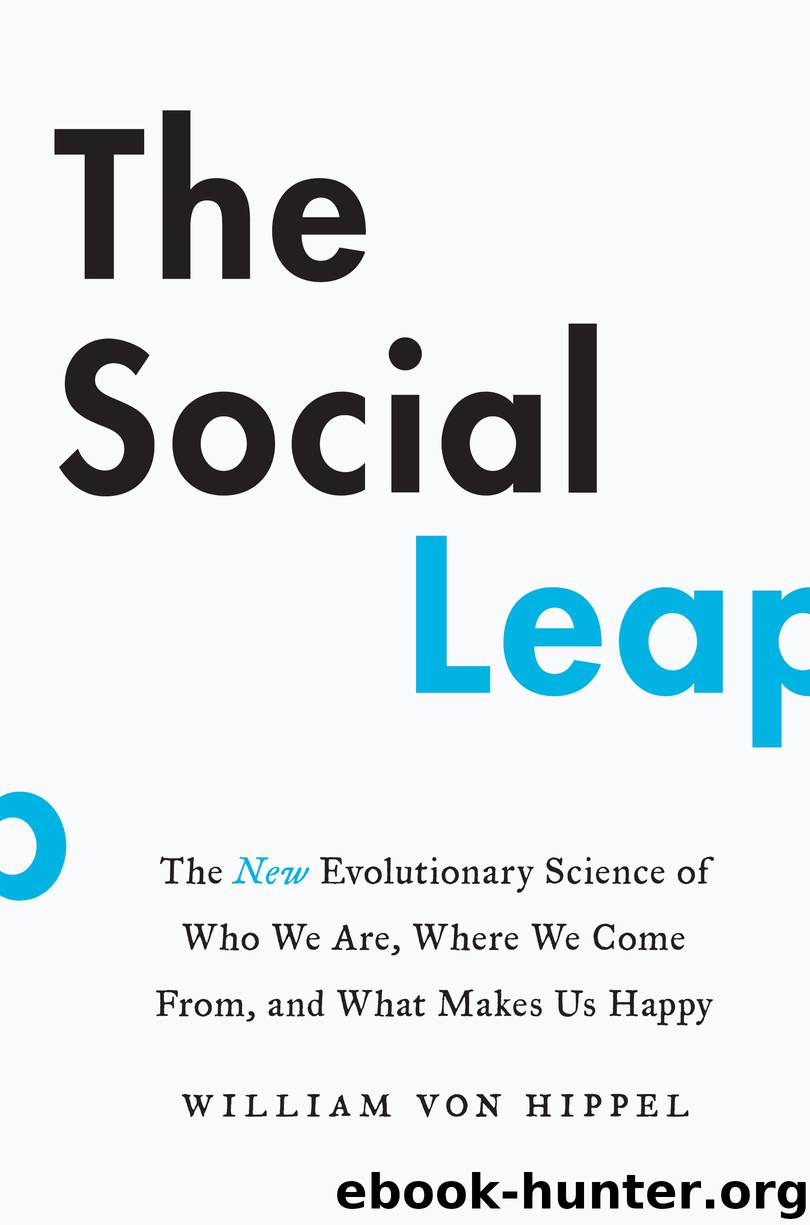The Social Leap by William von Hippel

Author:William von Hippel
Language: eng
Format: epub, azw3, mobi
Publisher: HarperCollins
Published: 2018-10-03T16:00:00+00:00
For most of us, social engagement is fun and rewarding, and ever since we left the trees, it has been our default orientation toward the world.* As a consequence, highly social people who have the talent to tinker with objects are relatively unlikely to do so when confronted with a problem. For example, it might be easy enough for some people to wire a can opener to their toaster and an oven timer to create an automatic dog feeder for when they’re out of town, but even people as handy as that would typically prefer to ask a friend to come over to feed Fido while they’re away. Thus, the social innovation hypothesis predicts that most people are unlikely to innovate technically. Of the (relatively few) people who reside in the lower two quadrants, only those who have a strong technical orientation would be likely to innovate technically. So even if technical skills themselves are relatively common, the ubiquity of human sociality would make technical innovation a relatively rare occurrence.
It is very difficult to test these possibilities with ancestral data, but two pieces of modern evidence support the social innovation hypothesis. First, one way of quantifying sociality is to look at the frequency of autism. People on the autism spectrum vary in intelligence, but regardless of their intellect, they struggle with social relations. Impaired social functioning is one of the hallmarks of autism. Even highly intelligent individuals with autism have problems with Theory of Mind, as their brains don’t automatically compute the intentions and feelings of others in the manner we discuss in chapter 2. As a result, people with autism don’t understand neurotypical people very well and struggle to engage them socially.
Given these facts, it’s no surprise that you rarely find people with autism working in sales, and they are also rare in the humanities and social sciences. In contrast, people on the autism spectrum can be readily found in fields in which the dominant orientation is toward objects and away from people, such as engineering and the physical sciences. For example, Simon Baron-Cohen of Cambridge University and his colleagues found that autism is more common in the families of physicists, engineers, and mathematicians than in the population in general.
When Baron-Cohen and his colleagues went on to develop a scale to quantify levels of autism, one of their first comparisons was between students in the sciences and those in the humanities. They found that science students had higher autism scores, including reduced levels of sociality, than humanities students, and this difference was most notable among students studying physical sciences, computer science, and mathematics. Students in the social sciences scored no differently from students in the humanities. Engineering students in this sample had scores that fell between those in the physical sciences and those in the humanities.
Unsurprisingly, engineers and physical scientists are also more likely than people in the humanities and social sciences to hold patents or to innovate technical products for their own use at home. In other words,
Download
The Social Leap by William von Hippel.azw3
The Social Leap by William von Hippel.mobi
This site does not store any files on its server. We only index and link to content provided by other sites. Please contact the content providers to delete copyright contents if any and email us, we'll remove relevant links or contents immediately.
Sapiens: A Brief History of Humankind by Yuval Noah Harari(14320)
Sapiens by Yuval Noah Harari(5322)
Pale Blue Dot by Carl Sagan(4953)
Homo Deus: A Brief History of Tomorrow by Yuval Noah Harari(4871)
Livewired by David Eagleman(3729)
Origin Story: A Big History of Everything by David Christian(3666)
Brief Answers to the Big Questions by Stephen Hawking(3393)
Inferior by Angela Saini(3293)
Origin Story by David Christian(3170)
Signature in the Cell: DNA and the Evidence for Intelligent Design by Stephen C. Meyer(3098)
The Gene: An Intimate History by Siddhartha Mukherjee(3074)
The Evolution of Beauty by Richard O. Prum(2963)
Aliens by Jim Al-Khalili(2803)
How The Mind Works by Steven Pinker(2777)
A Short History of Nearly Everything by Bryson Bill(2659)
Sex at Dawn: The Prehistoric Origins of Modern Sexuality by Ryan Christopher(2500)
From Bacteria to Bach and Back by Daniel C. Dennett(2462)
Endless Forms Most Beautiful by Sean B. Carroll(2443)
Who We Are and How We Got Here by David Reich(2417)
